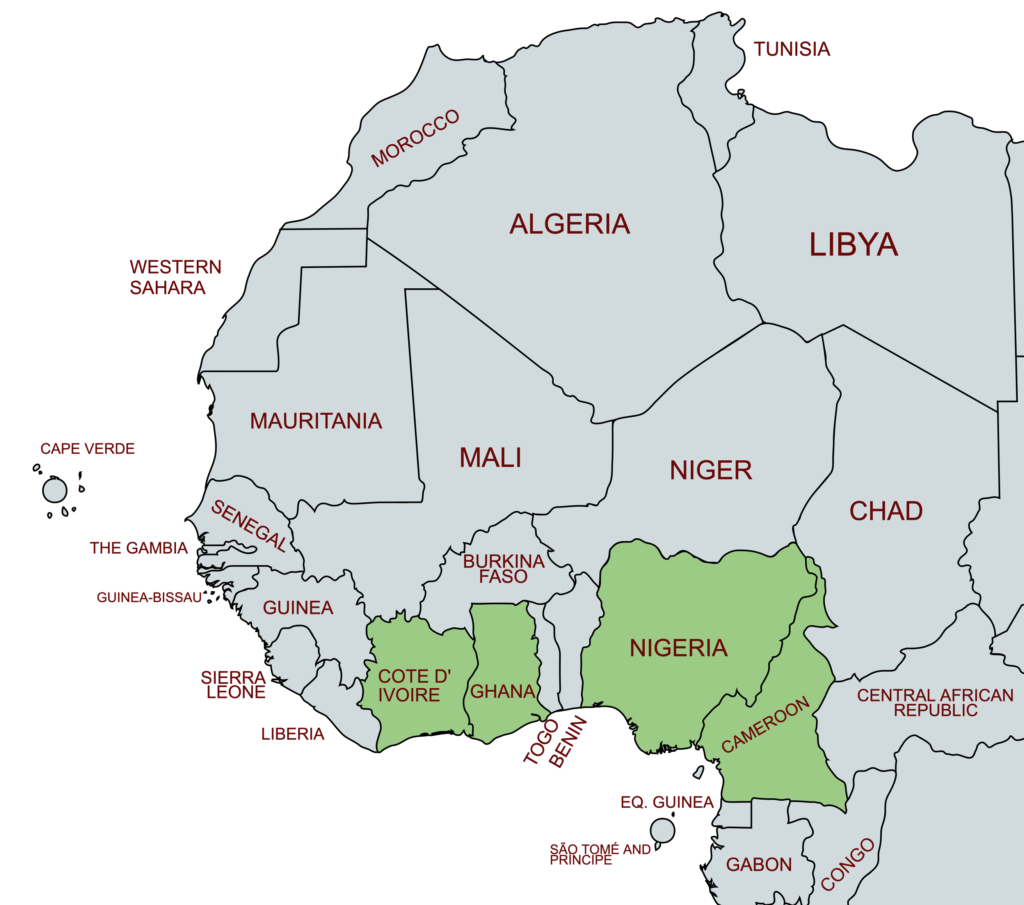As Halloween approaches, the annual ritual of stocking up on candy takes on a bitter twist. You may have noticed that the price of your favorite treats—Snickers, Reese’s, Butterfinger—seems a little scarier this year. While much of the conversation points to inflation and the U.S. economy in the lead-up to the 2024 election, the real specter behind this season’s sticker shock hails from West Africa.
The Cocoa Connection
The trick to understanding this price surge lies in the main ingredient of America’s favorite chocolates: cocoa. Seventy-five percent of the world’s cocoa supply comes from just four West African nations—Ghana, Côte d’Ivoire, Nigeria, and Cameroon. So, when cocoa prices rise, so does the cost of your candy bars.
This year, cocoa prices hit a record high, climbing past $10,000 per ton. In fact, the 2023-2024 harvest in Ghana is expected to drop to a 22-year low, and a global cocoa shortage is on the horizon. The International Cocoa Organization has forecasted a deficit of 374,000 tons, and stock levels are expected to plummet to their lowest point in 45 years. That’s no small problem in a world that runs on chocolate.

The West African Storm
So, what’s driving this cocoa crisis?
Environmental havoc is playing a leading role. The El Niño weather pattern is disrupting the rainfall cocoa plants depend on, causing droughts and wildfires that ravage plantations across West Africa. As if the climate weren’t enough, cocoa crops face the added menace of diseases like black pod and swollen shoot virus—afflictions that can wipe out entire farms.
But it’s not just the climate taking a toll—farmers themselves are grappling with a system that’s stretching their resources thin. Cocoa farms are being overworked, and the land, worn out from over-farming, can no longer yield the same bounty it once did. Many farmers are expanding into forests, contributing to deforestation and leaving the land even more vulnerable to climate shifts.
Meanwhile, illegal mining operations are increasingly encroaching on farmland, further degrading the soil and forcing farmers off their land. This vicious cycle compounds the problem, reducing available agricultural areas just as the world’s demand for chocolate grows.
The Cost of Candy
The bitter truth is that the cocoa crisis in West Africa is raising candy prices far beyond what can be explained by inflation alone. While environmental challenges persist, so too does the exploitation of farmers and fragile ecosystems. Efforts to stabilize the industry are underway—Ghana secured a $200 million loan from the World Bank to rehabilitate disease-ravaged plantations, while Côte d’Ivoire is working on a national traceability system to ensure sustainable production. But progress is slow, and the cocoa industry is standing on increasingly shaky ground.
Synthetic Cocoa: The Future of Chocolate?
The price of traditional chocolate might remain high for the foreseeable future. Enter synthetic cocoa, an emerging alternative that could reshape the industry.
ChoViva, a cocoa substitute made from oats and sunflower seeds, offers a compelling solution. This synthetic alternative mimics the flavor and aroma of real cocoa beans, but it comes without the environmental baggage. While purists might scoff, this technology could make chocolate more accessible and far less vulnerable to the climate disasters plaguing West Africa.
But what does that mean for the average consumer? Right now, synthetic cocoa products are still in development, but within the next few years, we could see them on store shelves—offering a cheaper, more stable option for chocolate lovers. The price tag could resemble the pre-crisis cost of your favorite chocolate bars, but the process behind it will be far more sustainable.
Ethical Dilemmas Ahead
This technological breakthrough presents consumers with a choice that may feel just as complex as the cocoa supply chain itself. On one hand, synthetic alternatives could help stabilize chocolate prices and ease the strain on West African farmers. On the other hand, such a shift could disrupt the livelihoods of millions of people in cocoa-producing regions, where entire communities depend on traditional cocoa farming.
Consumers might soon face an ethical dilemma: Do they stick with fair-trade chocolate to support struggling farmers, or do they opt for sustainable alternatives that reduce environmental harm but potentially threaten an already fragile economy?
A Trick or a Treat?
This Halloween, as you unwrap that treat, consider the cost behind it—not just in dollars, but in the livelihoods and ecosystems affected. The choice between traditional cocoa and synthetic alternatives might one day reshape the industry and the future of chocolate itself. For now, though, the real trick might be keeping our candy bowls full without further harm to West Africa’s cocoa farmers and forests.
